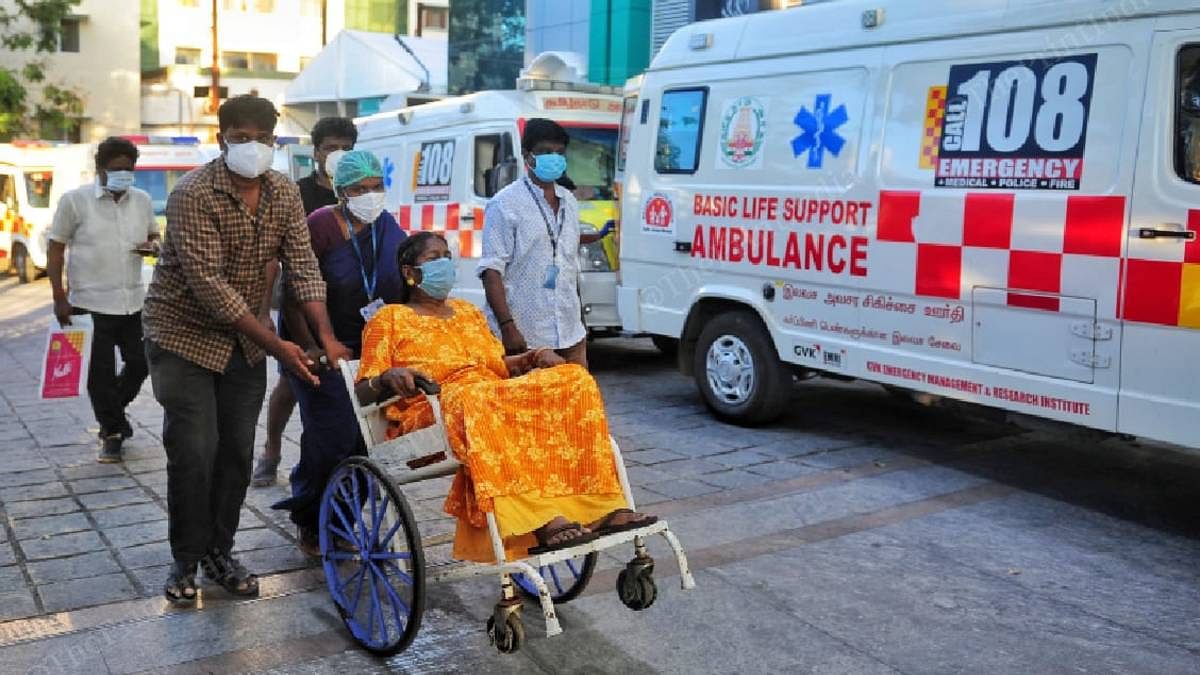The total OOPE of households in FY2022 was Rs 3,56,254 crore which stood at about Rs 2,600 per capita, the NHA estimates said.
It added that the Total Health Expenditure for India in FY2022 was Rs 9,04,461 crore—3.83 percent of the gross domestic product (GDP) and Rs 6,602 per capita.
According to the NHA, at $113 per capita, India was in the 69th position in per capita OOPE among a list of 189 countries ranked by the World Health Organisation’s Global Health Expenditures Database (2021). It ranked above Nepal ($117 per capita) and below Bangladesh ($112 per capita).
Of the total expenditures, government health expenditure (GHE), including capital expenditures, was Rs 4,34,163 crores, or 48 percent. By comparison, the GHE of the Total Health Expenditure was 29 percent in 2014-2015, when the report was first released.
Additionally, it showed that the Union government’s share in GHE is about 41.8 percent, while the share of state governments was about 58.2 percent.
Though these statistics indicate a rising trend in the Union government’s spending on healthcare, some public health specialists were sceptical that it was so.
“I am surprised how the latest NHA is showing government spending 1.84 percent of GDP in healthcare when there has been no year-on-year increase in allocation to the health ministry barring adjusting for inflation,” former Union health secretary K. Sujatha Rao told ThePrint.
She suggested that in calculating the cost of healthcare, the government was probably also taking into account the cost of sanitation and water supplies, which are not directly healthcare costs.
Dr Abhijeet More, a public health specialist from Maharashtra, pointed out that while health insurance schemes such as the Ayushman Bharat-Pradhan Mantri Jan Aarogya Yojana under which the government offers Rs 5 lakh hospitalisation coverage to nearly 40 crore Indians had likely raised government expenditure on health, this may be a “fundamentally flawed model”.
“The Centre and states purchasing healthcare services from the private sector means that no attention is paid to strengthening and revamping public healthcare delivery systems while people continue to shell out on medicines, consultation fee and diagnostic services which are primary components of OOPE,” said Dr More, who is also associated with Jan Swasthya Abhiyan.
Also Read: Govt health spends climb to 1.84% of GDP as out-of-pocket spending dips, show govt estimates for FY22
Kerala among states with highest OOPE
Of 21 states for which state-level OOPE data has been detailed, the OOPE is higher than the national average for 9 states.
At the top is Uttar Pradesh, where OOPE makes up 63.7 percent of the Total Health Expenditure. This is followed by Kerala at 59.1 percent, West Bengal (58.3 percent), Punjab (57.2 percent), Andhra Pradesh (52 percent), Jharkhand (47.5 percent), Madhya Pradesh (43.3 percent), Bihar (41.3 percent), and Himachal Pradesh (39.6 percent).
Here, it is surprising to note that Kerala—which has among the highest per capita government health expenditure at Rs 4,338 ranks has the second-highest OOPE in the country. The highest is Himachal Pradesh, which spends Rs 5,581 per capita.
In the southern state known for its strong public healthcare system, the Total Health Expenditure stands at Rs 48,034 crore which means the per capita THE—considering its population of 3.6 crore—is Rs 13,343, the highest among Indian states.
In Uttar Pradesh, which has the highest OOPE in the country, on the other hand, total OOPE in FY2022 was Rs 69,932 crore or Rs 3,014 per capita.
Overall, across the 21 states, residents spent Rs 28,400 crore, or Rs 7,889 per person, from their pocket to access healthcare in FY2022.
Interestingly, the report said that it used the 75th round National Sample Survey (2017-18) expenditure data to calculate the out-of-pocket expenditure for states for this period.
In-patient curative care takes up lion’s share of CHE
The new report shows Current Health Expenditure (CHE) constituted Rs 7,89,760 crores or 87.32 percent of THE, while capital expenditure stood at Rs 1,14,701 crores (12.68 percent).
Current Health Expenditure by government hospitals was Rs 1,49,900 crores (18.99 percent of CHE) and by private hospitals was Rs 2,12,948 crores (26.96 percent of CHE), the report said.
In terms of service providers, expenditure incurred by other government providers (including primary health centres, dispensaries, and family planning centres) was Rs 56,477 crores (7.15 percent of CHE) and other private providers, including private clinics, was Rs 30,080 crores (3.81 percent of CHE).
Providers of patient transport and emergency rescue, on the other hand, cost Rs 28,906 crores (3.65 percent of CHE); medical and diagnostic laboratories Rs 26,238 crores (3.32 percent of CHE); and pharmacies Rs 1,52,910 crores (19.35 percent of CHE).
Also, among the services rendered, CHE attributed to in-patient curative care was Rs 2,99,587 crores (37.94 percent); day curative care was Rs 7,327 crores (0.93 percent); outpatient curative care was Rs 1,20,816 crores (15.30 percent); patient transportation was Rs 28,906 crores (3.65 percent); laboratory and imaging services were Rs 26,238 crores (3.32 percent), and prescribed medicines cost Rs 1,26,225 crores (or 15.98 percent).
Additionally, the cost incurred towards over-the-counter medicines was Rs 25,458 crores (3.22 percent of CHE). In all, total pharmaceutical expenditure, including prescribed medicines, over-the-counter drugs, and those provided during an inpatient, outpatient, or any other event involving contact with the health system, comprised 30.84 percent of CHE.
(Edited by Sanya Mathur)
Also Read: Ayushman Bharat for 70+ age group to be rolled out within a week, Aadhaar must to avail scheme

